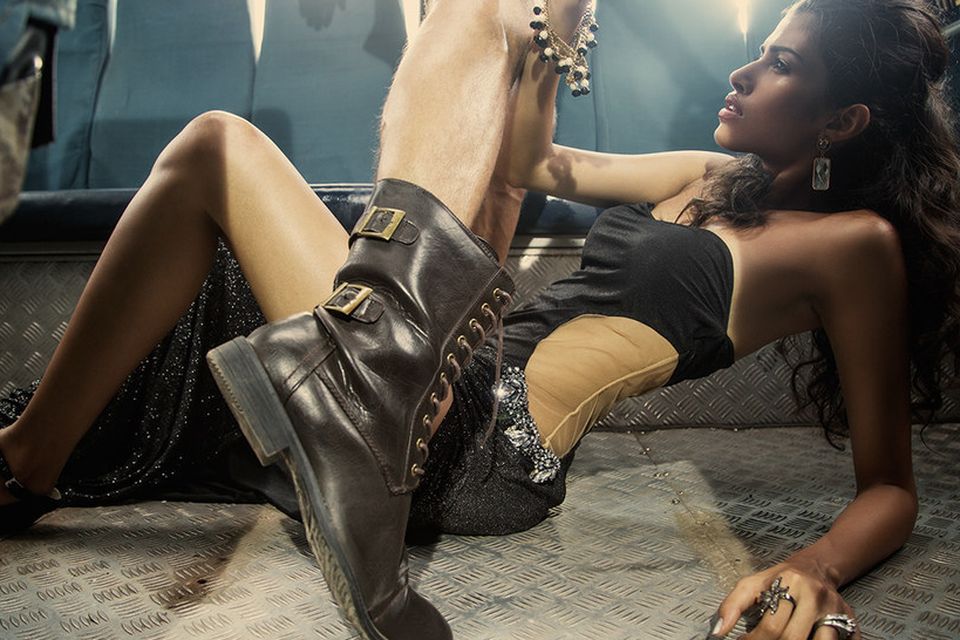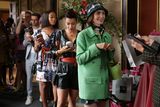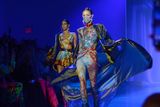Why are women always the victim in high fashion photo shoots?
Women are routinely victimised in fashion campaigns to the extent that gang rape is being glamorised before anyone questions the role of female models in advertising.
A newly published Indian fashion shoot depicting a woman on a bus surrounded intimidating by men, has become a bone of contention as it echoes the harrowing events of the December 2012 New Delhi gang rape.
Mumbai-based fashion photographer Raj Shetye initially insisted his photo series, seen below, was “not based” on Nirbhaya.
Nirbhaya, meaning ‘fearless’, is the pseudonym given to the victim who died after being violently raped by six men on a coach which had been hijacked by joyriders.
Shetye’s photos, titled “The Wrong Turn”, have provoked global backlash for their portrayal of an incident so raw and emotive.
In another statement, Shetye confirmed that he did intend for the shoot to provoke a response. and has said he is “satisfied” that everyone is talking about his work.
“Being a part of society and being a photographer, that topic moves me from inside, I stay in a society where my mother, my girlfriend, my sister are out there and something like this can happen to them also.”
“This shoot is not commercial gain. The concept is my baby ad the aim is to create art that will gather some reaction in society,” he told BuzzFeed and the Delhi Times.
And provoke a reaction it has, the unknown photographer has been propelled to international infamy, slammed for his careless handling of a case so depraved and degrading.
The photographer claims he wanted to shed light on the fact that a woman can not be well dressed on a bus or in public at all, without attracting unwanted attention.
In a Facebook post explaining his work he outlined, “An average Indian who commutes by public transport is expected to dress ‘norm core’ so as to conform to norms of societal expectation , thereby killing her dream to look good and be the cynosure of all eyes.”
In other words, Shetye laments for the woman who can’t dress as she pleases while taking her seat on the bus as she is not held in high regard by her fellow male passengers.
It was this ill formed judgement that resulted in a glossy photo shoot which shows a woman, in all her high fashion splendour, being grabbed, pushed, and stood over by menacing male figures.
But hey, at least she is dressing the way she wants.
Fashion can be, and often is, a thought provoking medium.
But there are some things- such as gang rape or child abuse- that should remain out of bounds.
Depicting such issues in a polished and edited light with dominating male models with a powerless woman is most definitely glamorising a very real and very serious issue.
Take for instance, two of the industries heavy weights Calvin Klein and Dolce & Gabbana, who came under fire for their stylised portrayal of women being overpowered by groups of men.
In 2007, Italian designers Domenico Dolce and Stefano Gabbana produced an ad that was considered so offensive it was banned across the world.
The stylistic ad showed a woman pinned to the ground by the wrists by a bare chested man as other men looked on.
The campaign was deemed to “offend the dignity of the woman” as she is “immobilised and subjected to a man’s will”.
The designers pulled the ad but were adamant that the image was “artistic” and intended to “recall an erotic dream, a sexual game”.
The duo also retorted that the advertising watchdog was a “bit backward”.
Leading feminist Kim Gandy has said “It's a provocative ad but it is provoking things that really are not what we want to have provoked. We don't need any more violence."
Similarly, in 2010 Calvin Klein released ads which showed Dutch model Lara Stone in various states of undress as she was surrounded by scantily clad males.
The risqué advertisements were banned in Australia after complaints flooded in, but continued to appear on billboards and in magazines across the world.
The fact that Shetye persisted to publish his photo series after less suggestive campaigns came under international criticism is baffling.
Combining a chilling title with the images set in a location that directly reflects the crime is nothing short of distasteful and obnoxious.
Women are sexualised in almost every section of the media on a daily basis and no one tends to bat an eyelid as it has become second nature.
However when somebody tries to outdo the adage ‘sex sells’ with ‘rape sells’, that is when we need to question where the boundary lies.
Join the Irish Independent WhatsApp channel
Stay up to date with all the latest news





















